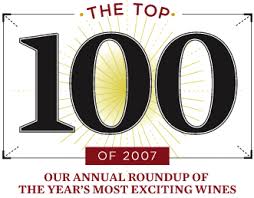 A review of Liquid Memory: Why Wine Matters by Jonathan Nossiter (FSG, 2009). Original French edition published in 2007 as Le Goût et le Pouvoir (Taste and Power).
A review of Liquid Memory: Why Wine Matters by Jonathan Nossiter (FSG, 2009). Original French edition published in 2007 as Le Goût et le Pouvoir (Taste and Power).
Jonathan Nossiter is famous for his 2004 film Mondovino. Love it or hate it (or love to hate it), Mondovino has given Nossiter standing in the world of wine and he takes advantage of this fact in Liquid Memory: Why Wine Matters.
Remembrance of Terroir Past
Although it is not intended to be a supplement to or continuation of Mondovino, I certainly learned quite a bit about the making of the film and its characters and about Nossiter, too. Indeed, the book is really about Nossiter and how wine inspires his memories and provokes his emotions just as a small cake, a madeleine, famously provoked Marcel Proust. It’s not my favorite book because I guess I’m not that interested in Nossiter’s memories, or at least not as interested as he is, but I did find things to like in it.
In one of my favorite scenes from the book, Nossiter and a film-making colleague are driving back from a day of Mondovino pre-shoot research in Burgundy and they talk about why they are so attracted to terroir. Members of a somewhat rootless transnational artistic class, they recognize that perhaps terroir is so precious to them because it is something they feel they have lost. Nossiter, the American raised in Paris, now lives in Brazil, well you can see how he would feel nostalgic for the authentic home terroir he maybe never had. That’s an emotion many of us can appreciate.
The Bland Taste of Peace?

Another passage subtly probes this same feeling in a different context. Why is terroir and regional identity so important now? Because sharp divisions have caused so much pain and hardship in the past (think Europe and the two World Wars). Suppressing differences and rounding off sharp corners to create a more peaceful whole has been the agenda of the last 50 years.
Now we find that universalism has gone pretty far, creating the terroir-free transnational world of the European Union and we start to value what we have lost. Sharp edges seem pretty desirable now that we’ve lost them, even if they sometimes bruise or cut.
I tasted both sides of this problem when we visited Friuli in the Italian Northeast a few years ago. We stayed outside of Cormons with the Venica family at their winery estate and the Sirk family at La Subida.
The land and people of this area where brutalized by the two Great Wars and so, when postwar peace appeared, they gathered grape varieties from around the world and planted them all together in one serene vineyard. The wine from these grapes, Vino della Pace (wine of peace) isn’t especially distinctive on the palate as I recall, but is memorable nonetheless for its optimistic symbolism.
We longed for the taste of peace when we didn’t have it. Now that we do, we find it a little bland. So we seek out terroir, even if it threatens to divide us once again. Interesting, isn’t it? Even in Friuli it is the intensely distinctive local wine of long memory – Pignolo, Schioppettino, Ribolla Gialla – that attracts our attention today, not the wine of peace.
Wine and Money
Although this is a book about cultural politics (if you believe the French title) and social philosophy (if you consider the American one), it seems to me that a great deal of space is actually given over to wine economics. The business of wine with its commercial pressures, and especially the ethics of wine pricing get a great deal of space.
“It occurs to me,” Nossiter writes, “that it is impossible to talk about wine without talking about money” and I think he is right. “Wine is inextricably linked to money like all objects of desire in a capital-driven world.”
Though a given bottle’s price varies even more peculiarly than the price of fine arts, a given bottle’s price is supposed to be a reflection of its intrinsic values. Whether it is the producer who sets the initial price, or the importer, distributor, or end seller, each time the price of the wine is set an ethical decision has been made in relation to the wine’s origins and contents.
Nossiter is disgusted by the religion of money, but in this passage he seems instead to be seduced by it, to accept the premise that market prices are moral judgments even as he protests their verdict. I think the premise is wrong and that intrinsic worth is measured by a different scale.
But that’s just the economist in me talking, I suppose.





